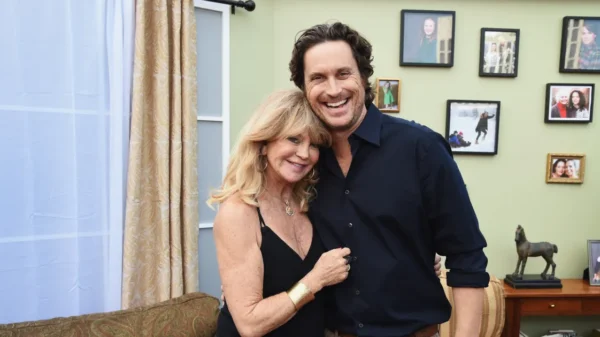Stop fooling yourself, and stop fooling them. It’s time to admit that you’re not in love with them.
We’ve been sold a lot of romantic visions of love, and while this might be the way things play out for some people — it’s not as common as we like to think. Relationships are hard. Building a life with someone else is complicated. Even when you think you’ve found the right person, the future doesn’t always play out that way. Even when you believe in your heart that you love someone you may not actually be in love with them.
Love is just as complicated, nuanced and fickle as building a life with an intimate partner. The true definition of love — while holding a few things in common — can differ greatly from person to person. We have to be clear on what love means to us in order to build something great with someone else. Have you spent time cultivating this definition of love? Are you in love with someone, or do you just love them for the value they bring to your life? The answer isn’t always as simple as it seems.
Loving someone isn’t the same as being in love.
When you think of romantic love, what are the first images that come to mind? Maybe you see a couple cuddling on a couch, or taking long walks on a summer beach. Maybe — to you — the definition of true love is building a family and piecing together a life with a house and some land of your own. While these are all great starting points, none of these paints a true picture. That’s because love is far more complicated than the dreams we focus on.
Loving someone isn’t the same thing as being in love, and that’s where our search for the true definition of love begins. Often, we confuse romantic love with genuinely caring for someone else, then find ourselves struggling through painful breakups that reaffirm our worst beliefs while broadsiding us emotionally.
Part of growing up is learning to question your emotions. Part of building better, stronger relationships requires us to be more honest with ourselves and the people we care for. Loving someone isn’t the same as being in love, but it’s still valuable. Why settle for fleeting feelings and self-centered conflict when we could have something that lasts the inevitable test of time? It’s time for you to take a step back and reconsider how you see love. It’s time to admit that you love them, but you’re not actually in love with them.
Signs you’re not really in love with them.
So, are you really in love with them? Or do you just love them as someone who brings something special to your life? While every relationship differs, these are some concrete differences that can point you in the right direction.
Feelings are fleeting
Are you experiencing an extreme fluctuation in emotion or feeling? Perhaps for one moment, the two of you are thick-as-thieves. The next, you’re distant and at one another’s throats. These kinds of extreme of ups and downs shouldn’t happen when we’ve truly fallen for someone. Instead, we should find that emotion and passion are steady and reliable, reacting naturally to the surrounding environment.
You come first
It’s impossible to build a stable and loving relationship when you are the only person you care to look out for. When we’re in love, we build lives together be engaging in compromise and finding ways to share and combine our lives. That’s different, though, when we aren’t “in love”. In these instances, you care for the other person (and you want the best for them) but you would still put your happiness and needs before their own if it meant getting what you want or finding fulfillment.
Too much effort needed
Are you or your new partner constantly fighting an uphill battle that never seems to settle? Is your friendship or budding partnership full of conflict and discontent? All relationships require effort, but they shouldn’t require total exhaustion or a depletion of self. The relationship that requires a constant struggle is not one based on love. It’s one based on forced standards and false perceptions.
It’s all physical
While physical relationships can be extremely gratifying and exhilarating, a physical connection alone is not always enough to indicate true romantic love. Instead, what it can indicate is a genuine connection between two people who enjoy one another and the things their bodies create together. Without the foundation of common future goals, partnership standards, or ambitions, however, it’s not really fair to expect lasting love to blossom.
Ownership and partnership
Our ideas and patterns around ownership and partnership can be a sign of where our heart truly lies. When we seek to control, possess, or change someone else — this is a surefire sign that we are not in love with them. That’s because (when we truly love someone) we encourage them to discover their greatness of their own. We support them with affection, but without the need to alter who they are or what they want from their lives.
Building an image
Sometimes, we confuse what we really want from a relationship with what society (or even our family) pressures us to engage in. Perhaps you’re forcing a partnership that doesn’t fit because you feel as though this person fits the standard you need to meet as a member of a certain sect of society. Perhaps you’re trying to enhance your own image, or the way people perceive you. Again, this isn’t love. It’s a form of conformity.
Making it a race
Thanks to the silver screen romances and fairy tales of our youths, we believe in magical ideas like “love at first sight” and passionate relationships that go from zero to married in 3 months flat. More often that not, though, this type of frantic rush (when it comes to love and romance) indicates insecurity and someone who sees marriage and even love as a “check mark” rather than a journey of mutual self-discovery.
How to move forward when you’re not in love with them.
It’s not always easy to admit that we’re not in love with someone we care about, but it’s an important process in our journey. By taking a deep-dive into reality and getting honest about our boundaries and needs, though, we can find the courage to admit the hardest truth that’s staring us right in the face.
1. Take a deep-dive into reality
You have to be honest about your relationship and you have to be honest about who you are and what you want. Taking a deep dive into reality is crucial when telling the difference between regular love and romantic interest. This isn’t a process that happens overnight, though. It’s one that takes some focus and looking inward for the right answers.
Step back and spend time considering what you really want from a romantic relationship and an intimate partner. For the next week, spend 10–15 minutes each day journalling about your ideal relationship. Completely imagine your partner and the life you want to share with. Record every single detail.
At the end of the week, look back over these notes and shed back any unrealistic expectations that might be clouding the waters. Be brutally honest with yourself and then be brutally honest about the person you’re standing across from now. Is this the person you need to feel fulfilled and loved? Is this the person you’re ready to sacrifice or compromise for? When you take a deep dive into reality, the answer becomes instantly clear.
2. Be honest with yourself (and them)
Once you know who you are and what you want, you have no choice but to be honest with the other person. Whether we are in love with someone, or we just love them as a friend, we owe them honesty — especially where there emotions are involved. While you might not be in love with them, they might be in love with you. Holding any compassion for them at all, you have to empower them to move on by freeing them from your grip.
If you’re not in love with them, you need to let them know. Find a safe and comfortable way in which you both can express yourselves. Ensure you won’t be interrupted, though, and ensure that there’s no one nearby who can interfere or interject. Share how you’re feeling, but be kind as you deliver the news.
Rejection is never an easy pill to swallow, but it’s often the right one. Share your emotions candidly and let the other person know that you genuinely want what’s best for them. Then give them space to express themselves too. Remember, relationships require the consent of both parties, though. Stay focused on your needs and don’t allow yourself to be swayed by and pressure they might exert on you.
3. Set boundaries that work
Boundaries are an important part of every relationship, but they become especially important when it comes to drawing the line between friendly love and intimate passion. Our boundaries are the spaces that make it clear where our expectations and rights to one another lie. Figure out how much space you need and then set boundaries you both can stick to respectfully.
Lean into your personal space and spend some time thinking about where you want the boundary lines to lie. Leave enough space between you and the other person to ensure that intensity can’t build. Perhaps limit the amount of time you spend seeing them face-to-face and agree to keep conversations within the realm of “platonic”.
There’s no right way or wrong way to go about doing this, but it should be a cooperative effort. It’s not always possible to move on as friends from an episode of “love-me-love-me-not” but it is possible. If you and the person you’ve failed to fall for are determined to keep it casual, then set some respectable limits that allow you both to remain comfortable and trusting.
4. Don’t fall into the force-it trap
Emotions can be complicated, but they can also come with a great deal of pressure and stress of their own. When you genuinely care for someone, you can feel pressured to select them as the one person you come home to every night. “They’re so good to me, I’ll never find someone else like them.” The problem here, though, is that forcing it when we don’t feel it only leads to settling (and heartbreak).
No matter how strong your feelings for them might be, don’t allow yourself to fall into the “force-it” trap if you know you aren’t actually in love with them. If you feel yourself, forcing something that doesn’t fit — STOP — and refocus yourself on that future and that partner you envisioned back in Step 1.
Don’t allow anyone else to pressure you, or make you feel like you have to make something work when it just doesn’t feel right. Stick to your boundaries and listen to your intuition. Your subconscious is always trying to point you in the right direction, you just have to get better at deciphering the directions. Part of this is in giving yourself time to process, which can be achieved by hitting the brakes when you feel things falling back into the same old forced patterns.
5. Maintain self-esteem (and self-respect)
When you’re confident about who you are and where you’re going, you don’t so easily succumb to the pressures of your environment. When you have a great deal of self-esteem, it’s much easier to say the truths that are in your heart — rather than playing along to someone else’s melody. You have to maintain self-esteem and then rely on that confidence when it’s time to be truthful with the people which you love (but aren’t in love with).
Break that pattern of defining yourself by some obscure definition of romantic love. Stop chasing relationships and the habits that other people have set for you. Look inwardly at your strengths. Look inwardly at that inner sense of love. You have a right to be happy, and you are worthy of having the precise sort of relationship that you want.
Build up your confidence by celebrating the things you do well. Lean into your passions and the friendships and pastimes which make you feel proud and at peace in yourself. Maintain this self-esteem always, and couple it with an undeniable sense of self-respect. You don’t have to settle for less than you want. You don’t have to keep carrying the weight of the world on your shoulders. Stand beside your truths with confidence.
Putting it all together…
Establishing a relationship with someone is no easy task. Even when we truly care for someone, it’s easy to get mixed up and find ourselves dealing with emotions that don’t really match up. Are you really in love with your new partner? Or do you just love them for the human that they are? You’re the only one who can tell the difference, but it’s a process which takes time.
Embrace reality for what it is, and kick-start this process by getting focused on what you realistically want and need from life and your partners. Once you’re clear on the facts, be honest with the other person. Let them know how much you care, but be clear about what space they need to inhabit in your life. We don’t owe a relationship to anyone, so set boundaries that keep the expectations clear. Once you’ve shared that you’re not in love, it’s important to maintain space — even if you’ve agreed to stay friends. Within this space, rebuild your sense of self-esteem, and allow that newfound confidence to propel you into the right relationship at the right time. Don’t fall into the force it trap. Have the courage to admit that you love them, but you’re not in love with them.
Source : Medium























































You must be logged in to post a comment Login